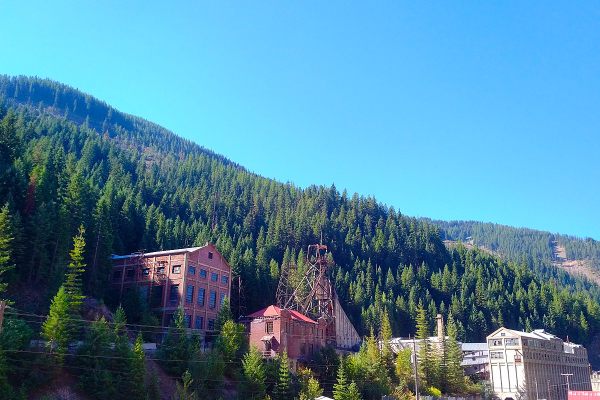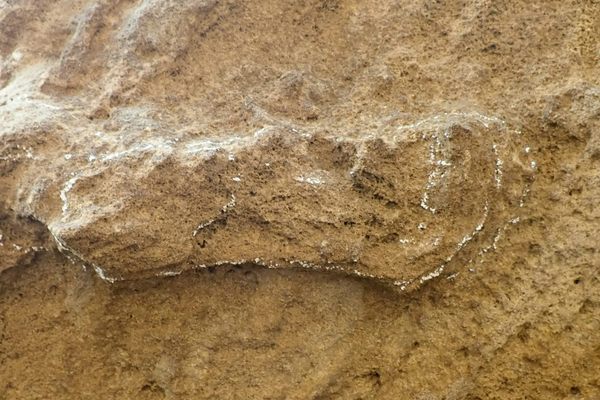The Best Clues to Life on Mars Could Be in These Idaho Fossils
Well-preserved ancient plants and other finds at the Clarkia fossil beds hint at what kind of evidence any Martian life may have left behind.
This story was originally published on The Conversation. It appears here under a Creative Commons license.
Does life exist elsewhere in the Universe? If so, how do scientists search for and identify it? Finding life beyond Earth is extremely difficult, partly because other planets are so far away and partly because we are not sure what to look for. Yet astrobiologists have learned a lot about how to find life in extraterrestrial environments, mainly by studying how and when the early Earth became livable.
While research teams at NASA are directly combing the surface of Mars for signs of life, our interdisciplinary research group is using a site here on Earth to approximate ancient environmental conditions on Mars. Contained within northern Idaho’s Clarkia Middle Miocene Fossil Site are sediments that preserve some of Earth’s most diverse biological marker molecules, or biomarkers. These are remains of past life that offer glimpses into Earth’s history.
About 16 million years ago, a lava flow in what would one day become Clarkia, Idaho, dammed a local drainage system and created a deep lake in a narrow, steep-sided valley. Although the lake has since dried up, weathering, erosion, and human activity have exposed sediments of the former lakebed.

For nearly five decades, research teams like ours—led by Hong Yang and Qin Leng—have used fossil remains and biogeochemistry to reconstruct past environments of the Clarkia Miocene Lake region.
The lake’s depth created the perfect conditions for protecting microbial, plant, and animal remains that fell to the lake’s bottom. In fact, the sediments are so well preserved that some of the fossilized leaves still show their autumn colors from when they sank into the water millions of years ago.

Today, ancient lakebeds on Earth are becoming important settings for learning about habitable environments on other planets. Clarkia’s lake sediments contain a suite of ancient biomarkers. These compounds, or classes of compounds, can reveal how organisms and their environments functioned in the past.
Since the discovery of the Clarkia fossil site in 1972, multiple research teams have used various cutting-edge technologies to analyze different biomarkers. Some of those found at Clarkia include lignin, which is the structural support tissue of plants, lipids like fats and waxes, and possibly DNA and amino acids.
Understanding the origins, history, and environmental factors that have allowed these biosignatures to stay so well preserved at Clarkia may also allow our team to predict the potential of organic matter preservation in ancient lake deposits on Mars.
In 2021, the Mars Perseverance Rover landed on top of lake deposits in Mars’ Jezero Crater. Jezero is a meteorite impact crater believed to have once been flooded with water and home to an ancient river delta. Microbial life may have lived in Jezero’s crater lake, and their biomarkers might be found in lakebed sediments today. Perseverance has been drilling into the crater’s surface to collect samples that could contain ancient signs of life, with the intent of returning the samples to Earth in 2033.

Clarkia has many similarities to the Jezero Crater. Both Clarkia and Jezero Crater have ancient lake deposits derived from silica-rich, basaltic rock that formed in a climate with higher temperatures, high humidity, and a carbon dioxide-rich atmosphere. At Clarkia, these conditions preserved microbial biomarkers in the ancient lake. Similar settings could have formed lakes on the surface of Mars.
The samples Perseverance is collecting contain the geologic and climate history of the Jezero Crater landing site and may even contain preserved biomarkers of ancient life. While Perseverance continues its mission, our group is establishing criteria for biomolecular authentication. That means we are developing ways to figure out whether ancient biomarkers from Earth, and hopefully Mars, are true echoes of life—rather than recent contamination or molecules from nonliving sources.
To do so, we are studying biomarkers from Clarkia’s fossil leaves and sediments and developing laboratory experiments using Martian simulants. This material simulates the chemical and physical properties of Jezero Crater’s lake sediments.
By deciphering the sources, history and preservation of biomarkers connected with Clarkia’s ancient lake deposits, we hope to develop new strategies for studying the Perseverance Rover samples once they are back on Earth.
Robert Patalano is a lecturer of biological and biomedical sciences at Bryant University.
























Follow us on Twitter to get the latest on the world's hidden wonders.
Like us on Facebook to get the latest on the world's hidden wonders.
Follow us on Twitter Like us on Facebook